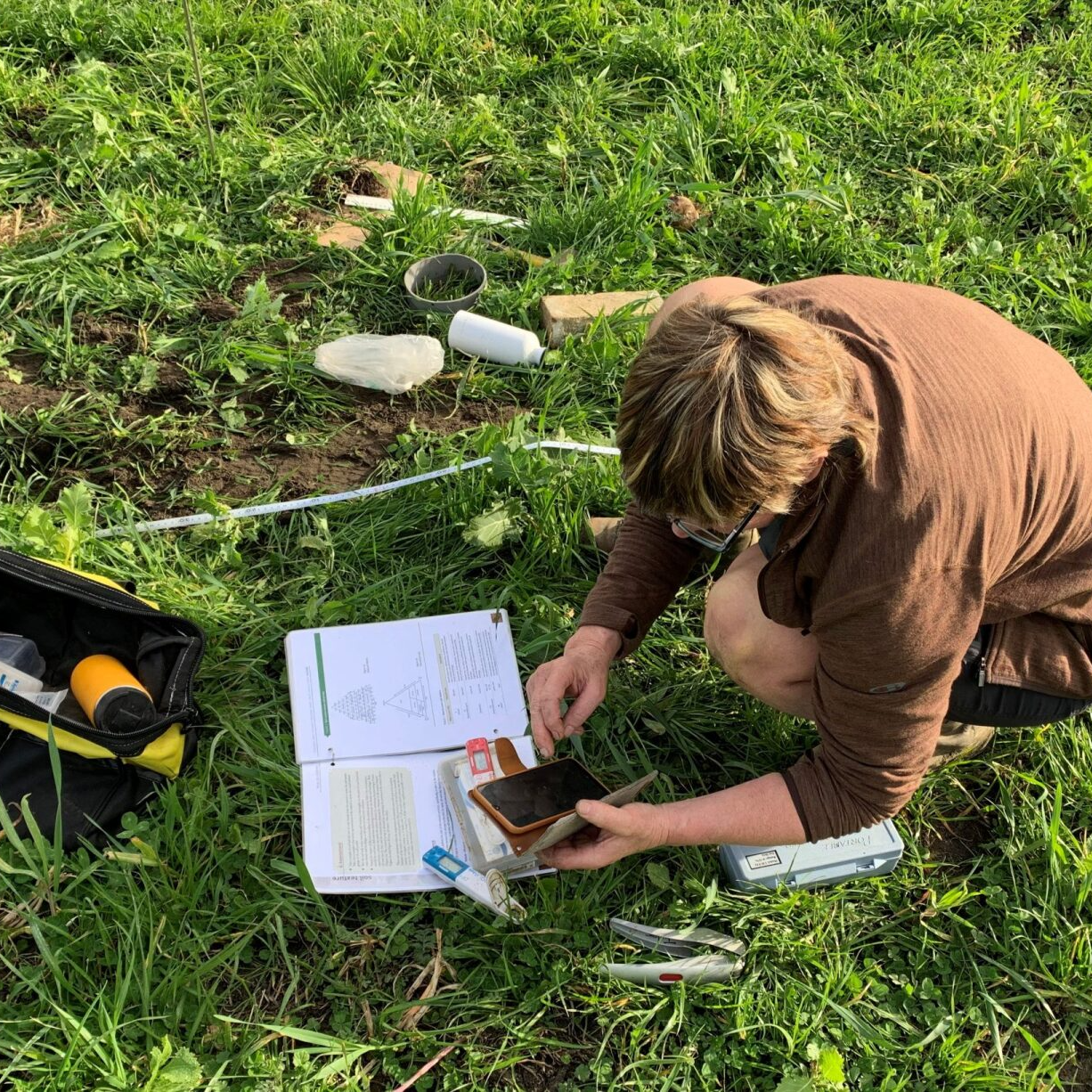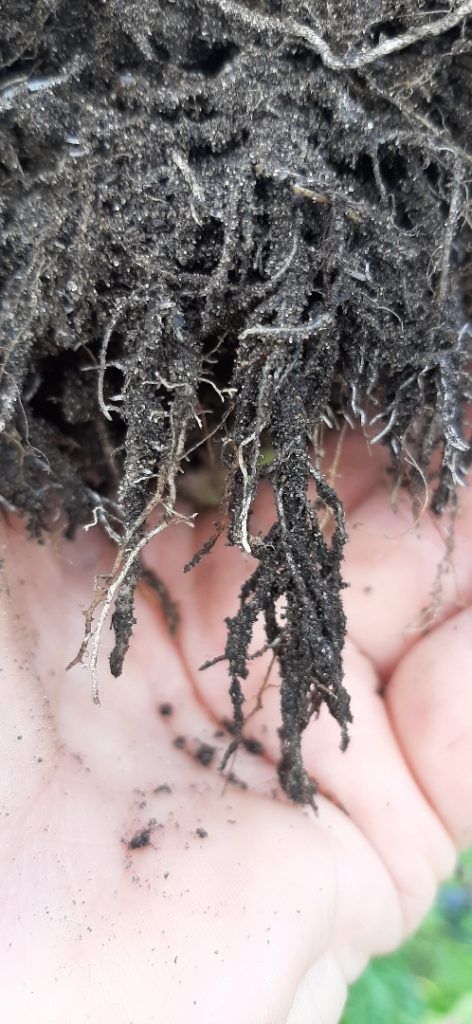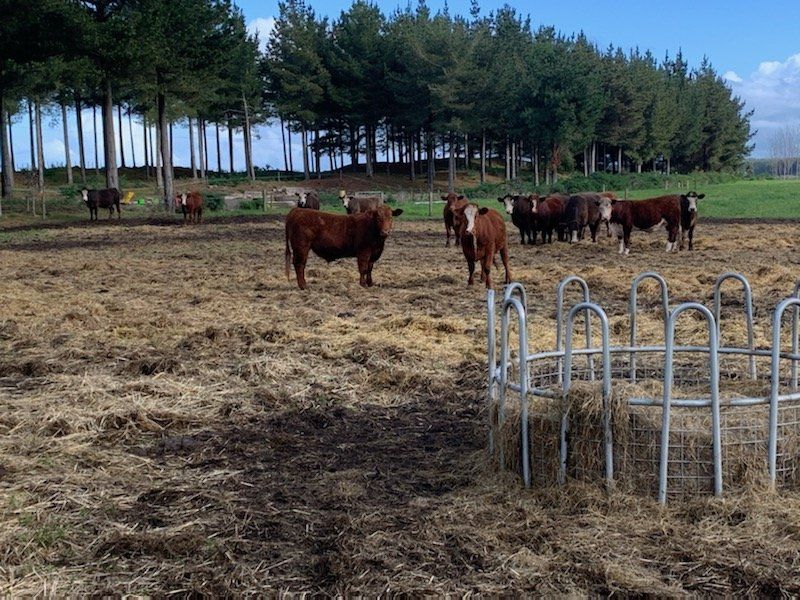Ph: 06 280 0938
Detoxing from the agrarian cocaine – it’s not easy!

Eighteen months ago I bit the bullet and committed to converting our wee farm, Raumai iti, to regenerative practices. At the time I wrote a blog about why I was converting which got lots of attention. That blog had the added bonus of actually holding me to account, and helping me with staying the course, because this habit has been trickier to drop than I thought.
And this is why…
For 30 years I honed the skills of growing and utilising ryegrass and clover. I became proficient at feed budgeting, working in risk management for adverse conditions, and getting the best possible conversion rates to maximise the kilojoules of metabolic energy/kg of dry matter/hectare, and so economic return. I learnt this shit in nineteen hundred and eighty at Lincoln University. It was very modern then.

In short form – I was all about grass and clover conversion into meat and wool. The soil was just a thing to grow grass on.
But a wise woman I know in this field, has now enlightened me with this concept:
“…the soil is the gut of our plants and like many of us with an upset microbiome in our gut we are seeing the same levels of diarrhoea, constipation and indigestion in our soils as in the human population.”
So, this new world I have embarked on is totally different. It is about growing healthy soils, and it’s nowhere near as glamorous – initially. In fact, it’s a bit messy, with lots of new plants introduced that I don’t even know much about.
I could go into the details of our conversion, but that’s not what I want to write about. Instead I’m really interested in my addiction to my old world of instant gratification, and how appealing that is. And there is another aspect to this journey, that I hadn’t predicted. I have become far more interested and attuned to nature that at any time in my farming career.
Regenerative practices are based around diverse mixes of pasture sward. Sometimes dozens of different species are planted together
to emulate a natural prairie-style sward, with the plants mutually helping each other out. This is totally weird to me, as I was raised on a more mono-sward approach.
But it’s starting to make sense to me, ironically far more than what I was trained to do originally.
Luckily, I have two people helping me through this conversion. Dennis Nieuwkoop is my go-to for practical help, and providing the seeds and seaweed-based fertilisers I need. And Jules Matthews from Integrity Soils for the analytics and advice. Jules monitors the soils, and measures stuff I have never considered in 30 years of conventional farming. Never.
Here’s Jules’ definition of what regenerative ag is:
“To start, let’s define regenerative ag in the simplest terms. It is about improving the whole system function. This includes our natural ecosystem, financial integrity as well as the social and personal aspects of a farming enterprise. Ideally, we will allow guiding principles to be applied in local contexts encouraging ingenuity, adaptability and the full capacity of human creativity. Regenerative ag is not an end goal but a journey of syntropic improvement as we look to restore the balance and function of the world that supports our existence. It is a principle-based approach to farming rather than a rule-based system such as organics. It is measured by outcomes including and not limited to water cycle function, nutrient cycling, biodiversity, animal wellbeing, food quality, economic integrity and social health. It involves a shift from viewing land as a commodity belonging to us to seeing it as a community which we belong to. Our job is to grow our understanding and connectivity both with the environment and within ourselves.”
Following on from that last sentence of Jules’, here’s the other big surprise – my mental health has benefitted. When I go out into a paddock, I am more observant of what is going on, and it is awesome to see the symbiotic thing happening between plants under my feet.
However, there are also times I would just love to fall back on using the agrarian cocaine (synthetic nitrogen) and get that big instant fix. I have hit that wall three times in the past 18 months, when my now-natural ecosystem has not been very buoyant, and I just want to get in there and fix it.
Here’s what Jules’ has to say on that:
“So how is Harv doing on his methadone programme? After a ‘hiss and a roar’ he was off, taking on new shiny tools such as applying fish hydrolysate, new seed mixes and bale grazing, trading one set of actions and inputs for another. Like many, this has proved challenging as he has looked for all the same indicators that things were going well. Not seeing these he quickly ran to wanting to return to the known method of choice, as short-term results and gratification seem to drive our actions more profoundly than long term commitments.
Getting Harv to slow down enough to dig a hole and check out the soil life beneath his feet and the health of the plants who are busy transforming sunlight energy into carbohydrates to feed the underground livestock has been a journey in itself. Greater yet is to have him connect with the concept that he is not a sheep or beef or even a grass farmer but rather a sunlight farmer who is harvesting free energy to grow a healthy ecosystem system. For Harv it just got more complex. He now has to consider the needs of the microbes in the soil as he does his feed budgets and actually consider the old adage of “grass grows grass” and how that looks in reality in an adaptive grazing system.”
What Jules is measuring under my feet (even though it’s new) makes more sense to me than what I used to measure before. What strikes me is how complex a natural farm system is compared to the more industrialised farming approach. Everything is connected and when it is in harmony, the results are magic.

The joy I got in hearing that we have started to activate our sandy soils (see photo 3 below), is far greater than anything I got growing grass in a prior farming life. Now, we basically farm in a giant sandpit with soils that are low in organic matter and nutrients and to think I am having a positive impact on this environment, while growing food, feels very regenerative indeed. The world needs food and the environment needs rejuvenating, and this system does just that.

Jules’ thoughts on the matter are:
“What Harv has on his regenerating journey, rather than someone who is just replacing one set of inputs with some that are more environmentally friendly, is his willingness to transform himself through understanding and action. Discovering rhizosheaths (the film that coats plant roots when there is healthy, active symbiosis between plant and microbes) developing on his plant roots on my recent visit had him able to see the impact his new practices are having as biology is quickly turning sand into soil, building organic matter, cycling nutrients and sequestering carbon. Like adopting any new practice, having someone to walk beside you is key to avoid the pitfalls and enable you to see the progress you are making.”

What I have witnessed outside the farm gate, is some really interesting behaviour from the establishment. Traditional farmers are either pushing back on regen practices, or saying they are already doing it by rotational grazing of stock. Sometimes they are saying the same thing. Both views I believe are utter bullshit.
However, there are some really interesting signs out there.
Greenpeace recently turned up on the doorstep of the Ballance Agri nutrient plant in Taranaki. Greenpeace has a long history of being very smart, strategic protestors about a wide range of environmental concerns. They are well researched and articulate, however can get a little tunnel-visioned (in that it’s not Urea at fault, but rather the management) but what we know is, Greenpeace don’t go away.
What’s ironic about this protest is that Ballance are sponsors of environmental awards around the country, and I wonder if we will view this in a few years’ time like we do now Benson and Hedges once sponsoring sporting events?
The big traditional fert companies have a dilemma. Can they adjust quickly enough to the new paradigms of growing soil, rather than grass, or become obsolete – or is there another possibility? Meanwhile there are a bunch of niche fertiliser companies who are growing very quickly, having done their time in the shadows.
I’m looking forward to our first New Zealand fertiliser company becoming a B Corp in the future. That would be a huge step forward. To be clear, we are lagging behind the USA and Australia in this space.
So, back to me. I had learnt enough to get started, and kick the habit, but not enough to keep going. That’s why having people like Jules and Dennis are so important to this movement. My concern is that too many farmers bite the bullet and convert, without enough support to stay the distance. That would be such a waste.
Jules’ says, “What I see is the demand for this guidance is already outstripping the availability of people able to partner farmers in this transition. Just as having the pusher run the detox programme while their income depends on sales is not a good model for success – so we must confront the who, and how, we will guide farmers as they embark on this journey.”
I had the privilege to interview Rod Oram earlier this year for my podcast. I asked him what he thought needed to happen to combat climate change. His response was very cool, “For people to fall in love with nature.”
I’m starting to get that loving feeling!
But I’ll leave Jules to have the final word here:
“Farming regeneratively is perhaps the most profound career choice a person could make and the least understood and appreciated in our modern world. This is a journey of courage and enlightenment for those who embrace it in its fullness.”
Collective Intelligence 2022 ©